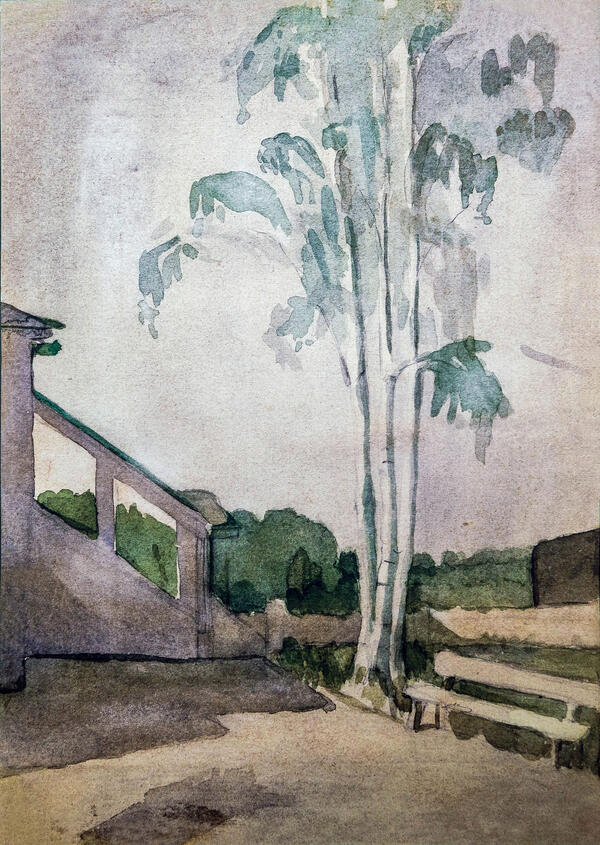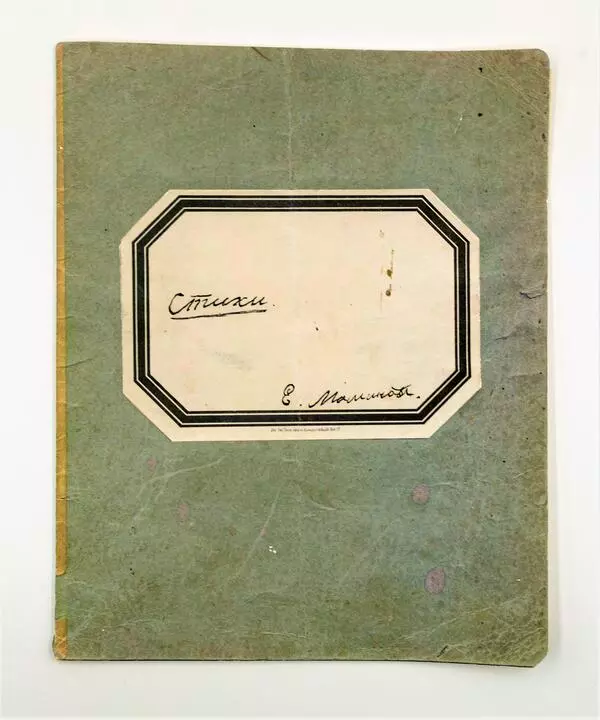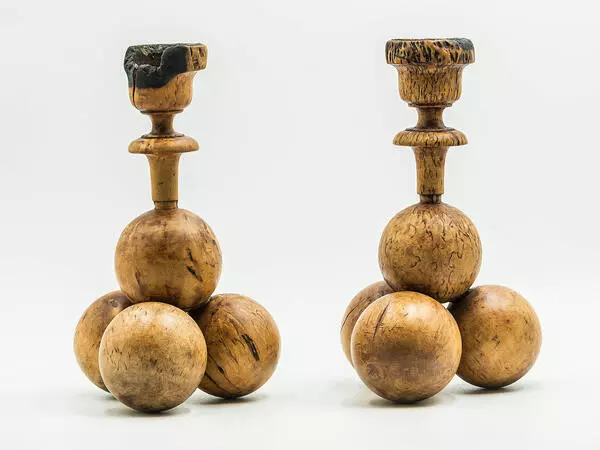In the dining room of the Mamin-Sibiryak House-Museum, there is a watercolor drawing of the early 20th century “Country Yard in Pavlovsk”. Its author was Yelena Mamina, the writer’s daughter. In 1948, Boris Udintsev, Mamin-Sibiryak’s nephew, gave the work to the museum exhibition.
Yelena Mamina depicted a small courtyard in a simple watercolor composition. In the center, there are three birches, on the right, there is a bench, and on the left side, one can see the wooden railing of the porch. In the background, there is a low fence and the edge of a green forest. The work is over 100 years old, so the ink faded and there are spots in some places — traces of insects. The painting was brighter, but now you can hardly distinguish the green color.
Yelena Mamina was born in St. Petersburg in 1892, in the family of the writer Dmitry Mamin-Sibiryak and the actress Maria Abramova. Her parents gave her an affectionate nickname — Alyonushka. The childbirth was difficult, the baby was injured, and the young mother died the next day. Mamin-Sibiryak became a single father. He brought up a girl himself; put a lot of time and effort into her. The writer’s friends jokingly called him “mammy”, and his child — “father’s daughter”.
Due to birth trauma, Yelena Mamina was a weak, sickly child. She was home schooled and could not travel. The grandmother and writer’s mother, Anna Mamina, came to visit her granddaughter every year. Later, a governess, Olga Guvale, appeared in the writer’s home in St. Petersburg. She loved Yelena Mamina and took care of her. In 1900, Dmitry Mamin-Sibiryak and Guvale got married.
Contemporaries remembered Yelena Mamina as a literary child: she loved reading and writing poetry. Some of her poems were published in children’s magazines in Moscow and St. Petersburg, among them: “Labor” [“Trud”], “Peace” [“Mir”], “Young Russia” [“Yunaya Rossiya”]. She also painted watercolors.
Mamina’s fate was not an easy one. She outlived her father by two years and died of a serious illness in September 1914, at the age of 22.
According to her will, her father’s house in Yekaterinburg on Sobornaya street (now Pushkina street) was given to the city with the wish to open the Urals literature museum and a museum of the writer. The will was executed in 1946.
Yelena Mamina depicted a small courtyard in a simple watercolor composition. In the center, there are three birches, on the right, there is a bench, and on the left side, one can see the wooden railing of the porch. In the background, there is a low fence and the edge of a green forest. The work is over 100 years old, so the ink faded and there are spots in some places — traces of insects. The painting was brighter, but now you can hardly distinguish the green color.
Yelena Mamina was born in St. Petersburg in 1892, in the family of the writer Dmitry Mamin-Sibiryak and the actress Maria Abramova. Her parents gave her an affectionate nickname — Alyonushka. The childbirth was difficult, the baby was injured, and the young mother died the next day. Mamin-Sibiryak became a single father. He brought up a girl himself; put a lot of time and effort into her. The writer’s friends jokingly called him “mammy”, and his child — “father’s daughter”.
Due to birth trauma, Yelena Mamina was a weak, sickly child. She was home schooled and could not travel. The grandmother and writer’s mother, Anna Mamina, came to visit her granddaughter every year. Later, a governess, Olga Guvale, appeared in the writer’s home in St. Petersburg. She loved Yelena Mamina and took care of her. In 1900, Dmitry Mamin-Sibiryak and Guvale got married.
Contemporaries remembered Yelena Mamina as a literary child: she loved reading and writing poetry. Some of her poems were published in children’s magazines in Moscow and St. Petersburg, among them: “Labor” [“Trud”], “Peace” [“Mir”], “Young Russia” [“Yunaya Rossiya”]. She also painted watercolors.
Mamina’s fate was not an easy one. She outlived her father by two years and died of a serious illness in September 1914, at the age of 22.
According to her will, her father’s house in Yekaterinburg on Sobornaya street (now Pushkina street) was given to the city with the wish to open the Urals literature museum and a museum of the writer. The will was executed in 1946.





